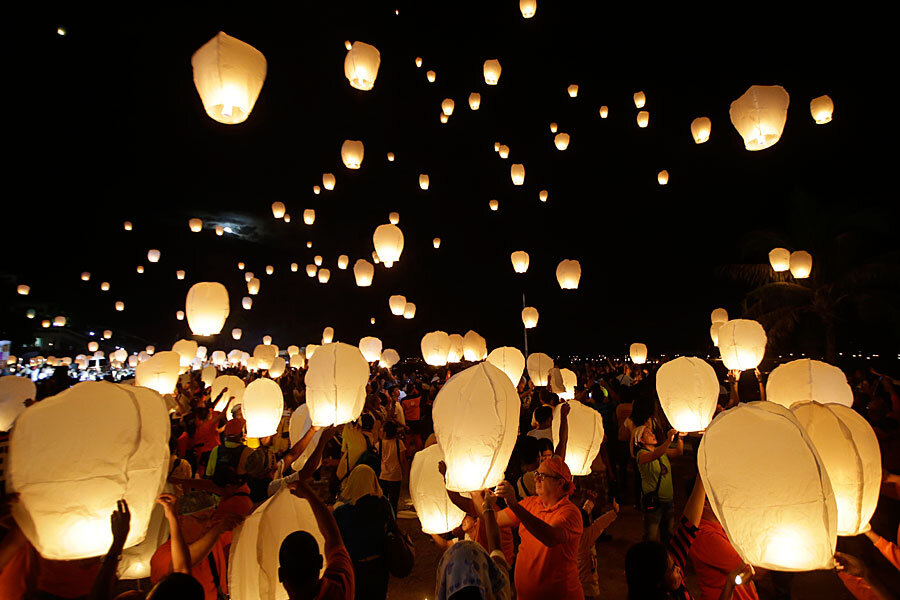Why Nebraska wants to ban Chinese lanterns
Loading...
Sky lanterns – also called wish lanterns, or Chinese lanterns – are floating paper luminaries that originate from Chinese culture. But because the miniature hot air balloons are lit from inside by flames and can end up floating onto trees and other flammable objects, Nebraska is now among at least 26 states that have banned them.
The state senators unanimously approved the statewide ban on Thursday. Supporters of the bill say the lanterns are a clear fire hazard if they land in residential neighborhoods or dry fields.
Earlier this month, a New Zealand home was set on fire by a sky lantern released to celebrate a wedding. And in Britain two years ago, a sky lantern that ended up at a plastic recycling plant caused $9 million in damages.
After a 44-0 vote, the measure heads to Gov. Pete Ricketts (R). Under the legislation, violators would face up to $100 fine.
Oregon lawmakers are considering the same ban.
“They are very pretty. And they’re pretty dangerous,” Oregon Rep. David Gomberg, a Democrat from Lincoln City, told the Statesman Journal in early February. He called the lanterns “flying Sterno cans.”
“I think this is the next logical step,” he added. “I’m treating them the same way we treat fireworks. They are untethered open-flame devices that the wind can take anywhere.”
In 2013, the National Association of State Fire Marshals issued a statement urging local lawmakers to ban sky lanterns and events facilitators to discourage their use, saying "there is no control over the device once released," and noting that a paper balloon can float up to a mile into the air and travel several miles.
States that have banned the lanterns include California, Hawaii, Illinois, Maryland, Minnesota, New Hampshire, Oregon, Rhode Island, South Carolina, Tennessee, Utah, Virginia, and Washington. Spain and Austria have also prohibited their use.
But proponents of sky lanterns argue that they should be regulated, not banned. Rob Laughton, part owner of an online store that sells them, told the Associated Press that his products come with safety instructions urging customers to use common sense. He warns them, for instance, to not release the lanterns near airports or wooded areas.
"The lantern can only come down once the wick has gone out," he said. "The lantern will come back without any burning parts."
Traditionally known in Chinese as “tian deng” or Kongming lanterns, the glowing airborne balloons were first used to communicate signals during wartime. For centuries since, they have been launched during festivals and celebrations to send positive wishes afar and as a gesture of good luck.






